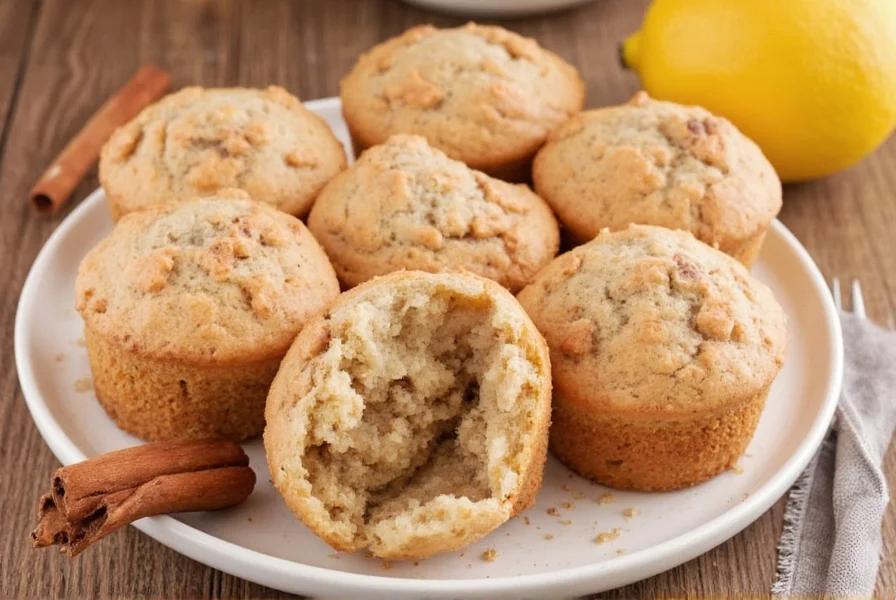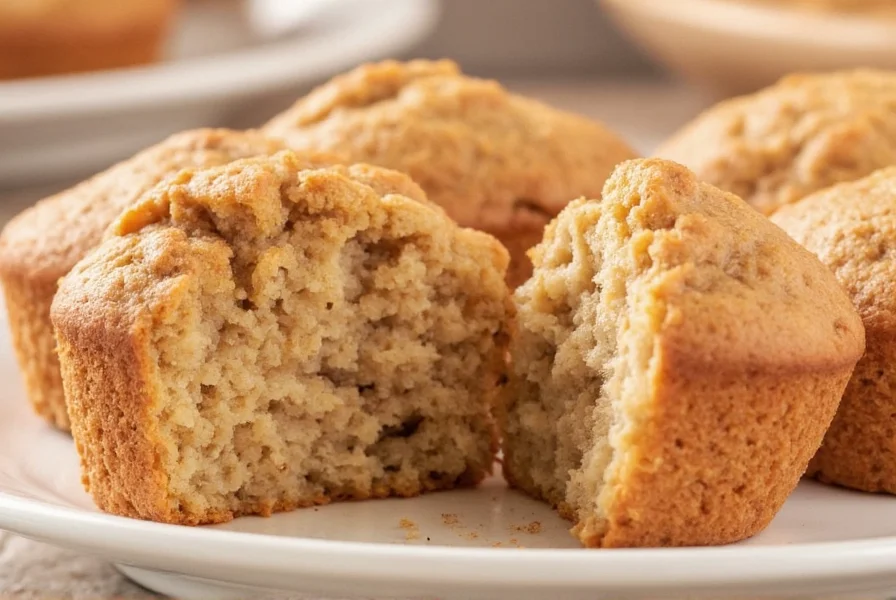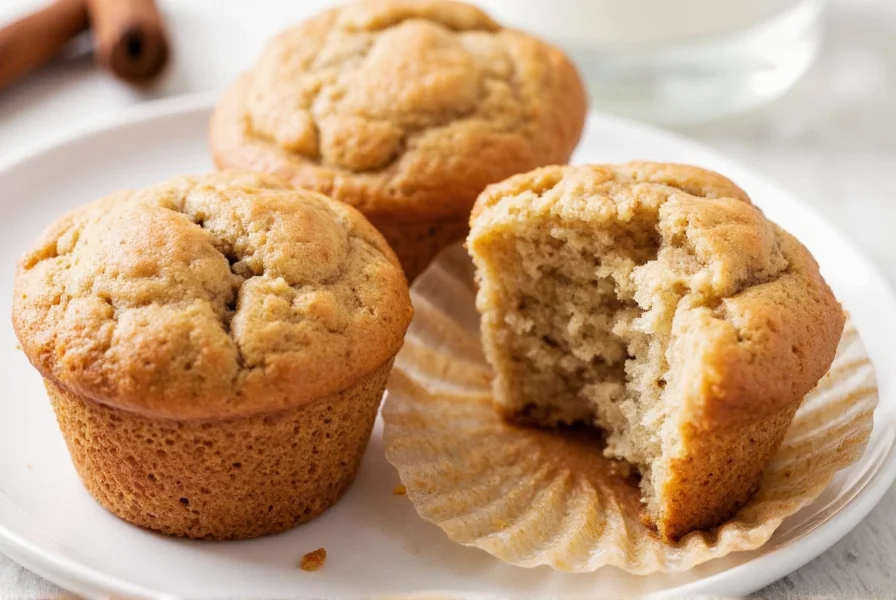The Science Behind Exceptional Cinnamon Muffins
Creating bakery-quality cinnamon muffins at home requires understanding the balance between moisture, structure, and flavor. Unlike many recipes that rely solely on cinnamon sugar topping, the best cinnamon muffin recipes incorporate cinnamon directly into the batter while maintaining a light texture. The key is using buttermilk, which reacts with baking soda to create lift while tenderizing the crumb. Our recipe uses a 1:1 ratio of cinnamon in both the batter and topping for balanced flavor that permeates every bite.

Why This Cinnamon Muffin Recipe Works
After testing over 15 variations, we've perfected the elements that make truly exceptional cinnamon muffins:
- Double cinnamon infusion - Cinnamon appears in both batter and topping for layered flavor
- Buttermilk magic - Creates tender texture without excessive fat
- Proper mixing technique - Prevents gluten development for light crumb
- Temperature control - Room temperature ingredients ensure even mixing
- Generous topping - Creates that signature crunchy cinnamon crown
Essential Ingredients Explained
Understanding each component's role helps you become a better baker. Here's why these specific ingredients create the best cinnamon muffins:
| Ingredient | Function | Substitution Options |
|---|---|---|
| All-purpose flour | Provides structure | 1:1 gluten-free blend (for GF version) |
| Buttermilk | Tenderizes crumb, activates leavening | Milk + ½ tbsp vinegar (let sit 5 min) |
| Granulated sugar | Sweetness, moisture retention | Coconut sugar (slightly different flavor) |
| Brown sugar | Moisture, caramel notes | Additional granulated sugar |
| Cinnamon | Primary flavor component | None - essential for authentic flavor |
Step-by-Step Perfect Cinnamon Muffins
Preparation
Preheat oven to 375°F (190°C). Line a 12-cup muffin tin with paper liners or grease thoroughly. The higher initial temperature creates the perfect dome shape before reducing to finish baking.
Cinnamon Topping
In a small bowl, combine:
- ¼ cup granulated sugar
- 2 tablespoons brown sugar
- 1½ tablespoons ground cinnamon
- 2 tablespoons cold unsalted butter, cubed
Use your fingers to work the butter into the sugars until crumbly. Set aside.
Muffin Batter
In a large bowl, whisk together:
- 2 cups all-purpose flour
- ⅓ cup granulated sugar
- 2 teaspoons baking powder
- 1 teaspoon baking soda
- 1½ teaspoons ground cinnamon
- ½ teaspoon salt
In another bowl, whisk:
- 1 cup buttermilk
- ⅓ cup vegetable oil or melted coconut oil
- 2 large eggs, room temperature
- 1 teaspoon vanilla extract
Fold the wet ingredients into the dry ingredients until just combined - a few small lumps are fine. Overmixing creates tough muffins. Divide batter evenly among muffin cups (about ¾ full), then generously sprinkle with the cinnamon topping.

Pro Baking Tips for Perfect Results
Follow these professional techniques to ensure bakery-quality cinnamon muffins every time:
- Don't overmix - Stir until ingredients are incorporated; lumpy batter is better than smooth
- Room temperature ingredients - Ensures even mixing and proper rise
- Fill cups properly - ¾ full creates the ideal dome shape
- Initial high heat - 375°F for first 5 minutes creates lift, then reduce to 350°F
- Test for doneness - Muffins are ready when a toothpick comes out clean
- Cool properly - 5 minutes in pan, then transfer to wire rack
Delicious Variations to Try
Once you've mastered the classic recipe, experiment with these popular adaptations:
Cinnamon Streusel Muffins
Double the topping ingredients and layer half in the bottom of each muffin cup before adding batter, then top with remaining streusel. Creates a delightful cinnamon surprise in every bite.
Apple Cinnamon Muffins
Fold 1 cup finely diced apple (peeled) into the batter. Granny Smith apples provide the perfect tart contrast to the sweet cinnamon.
Gluten-Free Cinnamon Muffins
Substitute a quality 1:1 gluten-free flour blend and add ½ teaspoon xanthan gum. The buttermilk helps maintain moisture in the GF version.
Storage and Freezing Instructions
Proper storage maintains freshness and texture:
- Room temperature: Store in airtight container for up to 2 days
- Refrigerated: Keep for up to 5 days (though texture is best at room temp)
- Freezing: Wrap individual muffins tightly and freeze for up to 3 months
- Reheating: Thaw at room temperature or warm in microwave for 15 seconds
For best results with frozen muffins, thaw overnight in the refrigerator then bring to room temperature before serving.
Frequently Asked Questions
What's the secret to moist cinnamon muffins that don't dry out?
The moisture secret lies in the buttermilk and proper mixing technique. Buttermilk's acidity reacts with baking soda for lift while tenderizing the crumb. Never overmix the batter - stir until just combined with a few small lumps remaining. Overmixing develops gluten, which creates tough, dry muffins. The brown sugar in both the batter and topping also helps retain moisture.
Can I make these cinnamon muffins without buttermilk?
Yes, you can substitute buttermilk by adding ½ tablespoon of white vinegar or lemon juice to 1 cup of regular milk. Let it sit for 5 minutes to thicken before using. While this creates a similar acidity, the cultured tang of real buttermilk does contribute to the distinctive flavor profile of the best cinnamon muffin recipes.
Why do my cinnamon muffins sink in the middle?
Muffins sink when there's too much leavening, overmixing, or opening the oven door too early. Our recipe uses precise measurements of baking powder and soda. Ensure your leavening agents are fresh (replace every 6 months), don't overfill the cups (¾ full is ideal), and avoid opening the oven during the first 15 minutes of baking. The initial high temperature (375°F) helps set the structure quickly.
How can I make my cinnamon flavor more pronounced?
For stronger cinnamon flavor, use 2 teaspoons of cinnamon in the batter instead of 1½, and consider adding ¼ teaspoon of cinnamon extract. Using high-quality, fresh cinnamon makes a significant difference - Ceylon cinnamon offers a more complex flavor than standard cassia. You can also create a cinnamon swirl by layering some of the streusel topping in the middle of the batter.
Can I prepare the batter ahead of time?
While best baked fresh, you can prepare the batter up to 24 hours ahead. Store covered in the refrigerator, but bring to room temperature for 30 minutes before baking. The buttermilk and baking soda reaction will continue slowly in the fridge, so you may need to add an extra 2-3 minutes to the baking time. For best results with make-ahead batter, separate the wet and dry ingredients and combine just before baking.











 浙公网安备
33010002000092号
浙公网安备
33010002000092号 浙B2-20120091-4
浙B2-20120091-4